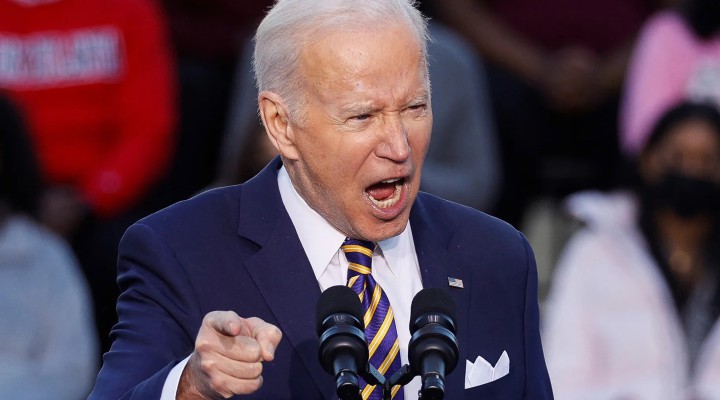Paul Craig Roberts: the intent is to add to the pressure on Russia

The GEOFOR editorial board asked Paul Craig Roberts, Chairman of the Institute for Political Economy (USA), a PhD in Economics and US Undersecretary of Treasury in the Reagan administration, with a request to assess how the confrontation between Russia and the United States will unfold.
– The actions of the Biden administration in the Pacific region in building military alliances (AUKUS, Japan-South Korea-US, Japan-Philippines-US), increasing military supplies to Taiwan, increased support for anti-government forces in Myanmar (Burma), preparations for the deployment of medium-range missiles in the Philippines, etc., in our opinion, indicate the shift of Washington’s military-strategic interests to this region. It also indicates the preparation of a springboard for military pressure on China. What do you think about this?
– It is a mistake to think that having lost the war of attrition in Ukraine Washington is shifting its focus off of Russia and onto China. The purpose of US military expansion in Asia is to counter Chinese influence and to pressure China to limit its relationship with Russia. Whether Washington succeeds or doesn’t, the intent is to add to the pressure on Russia
– But will the Pentagon’s budget withstand three armed conflicts: Ukraine, Israel, and the Pacific Ocean in the future? I remember that the U.S. military and experts, in particular RAND Corporation, unequivocally stated that at present the U.S. can afford direct or indirect participation in no more than two medium-intensity armed confrontations. What can Washington afford to give up: Ukraine or Israel? Or will it put the confrontation with China “on the waiting list”? But then another visit to Beijing by Secretary of State Blinken, which coincided with the allocation of funds to arm Taiwan, is unlikely to serve the cause of normalizing U.S.-China relations.
– The view that the US can manage only two armed conflicts means when the US itself is at war using its own troops. It does not include conflicts in which the US supplies weapons to proxie forces as in Ukraine. The US can provide weapons to Ukraine, Taiwan, Israel, and everywhere else that it is possible to open another front against Russia, such as a new color revolution in Georgia. Do notice the assassination attempt just made on the Prime Minister of Slovakia who disassociated Slovakia from the West’s hostile policy against Russia. Whatever deceptive words Washington might use, Washington will continue to hold the line against normalizing relations with Russia. Indeed, Washington has every European leader except for Viktor Orban and Robert Fico urging their countries to prepare for war with Russia.
Keep in mind also that the Rand Corporation speaks for the military/security complex and will always emphasize that more military spending is needed. Washington’s emphasis is always on coercion instead of diplomacy.
– And now about Ukraine, today we cannot do without it. Not so long ago President Biden signed the law on allocation of funds to Taiwan, as well as Israel and Kiev. Formally, Ukraine is allocated about 61 billion dollars. If we add to this amount the money allocated by the EU, we still get about half of the funds that paid for last year’s “counter-offensive”, which ended with huge losses and zero result for Kiev. How do you see the prospects for the Ukrainian conflict, in which, according to former Minister Shoigu, about half a million Ukrainians have died? How useful will these funds be for the AFU? And what this all will lead to? Especially given the Russian military offensive in the Kharkov direction.
– The funds provided to Ukraine have two purposes. One is to provide fortunes for Ukrainians who carry out Washington’s policy. The other is to provide payments to the US armaments industry for US weapons. Are Russian hopes that Washington might be tiring of a losing war realistic or unrealistic? If Washington is tiring of the war, why were French troops sent to Ukraine? The deployment of French troops could be the opening wedge of a larger deployment. With Russia, 27 months too late, now moving on Kharkov, Washington might be thinking of occupying Odessa with the US airborne division stationed in Romania. What then does Russia do? If the Ukrainian front collapses and Ukraine abandons territory east of the Dnieper River, it is not unreasonable to expect to see Western Ukraine fill up with NATO troops. On May 16 the US Chairman of the Joint Chiefs of Staff Charles Q. Brown told the New York Times that the NATO military alliance will “eventually” send significant numbers of active-duty NATO troops to Ukraine.
In other words, the war won’t be over when Putin has achieved the aims of his limited military operation.
Putin has done a good job of Russifying a population that was infatuated with the West. Russians again think of themselves as a distinct and proud national entity, not as a wannabe cog in globalist machinery run by Washington. Putin gets kudos for this, but his conduct of the war maximizes the likelihood of the conflict spinning out of control. Prigozhin understood this, and so does Kadyrov who recently said on Rossiya TV: “I believe that we need to attack more actively, we need to hit hard while there is time. This month we need to take the nearest territory, we definitely need to take Odessa and Kharkiv. Then sit this Zelensky down and force him to sign all the papers that Russia needs for the security of our state, citizens and the Russian-speakers who live on the territory of Ukraine.”
This should have been done 27 months ago. If it had, there would be no conflict to spin out of control.
 TheAltWorld
TheAltWorld 
0 thoughts on “Paul Craig Roberts: the intent is to add to the pressure on Russia”